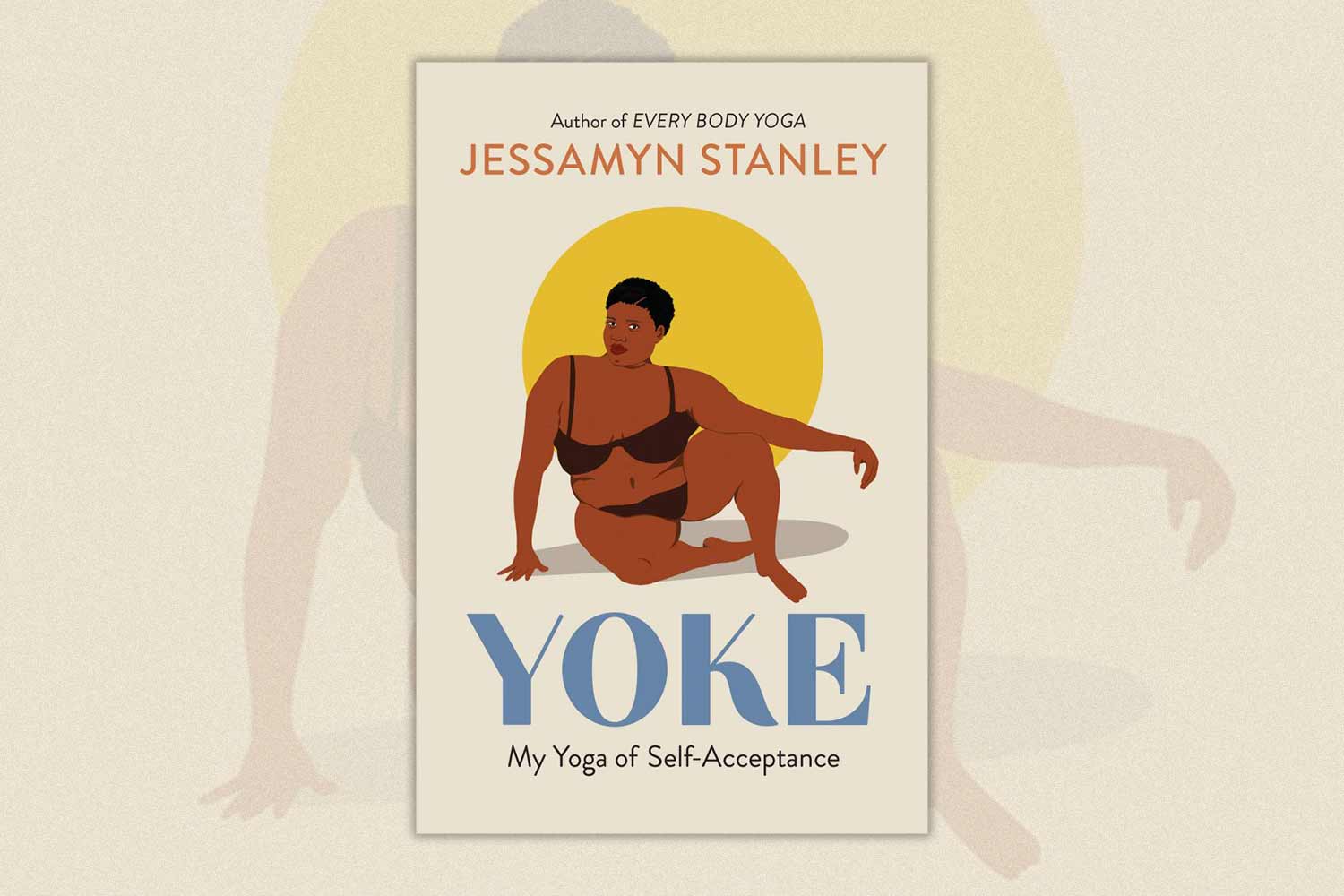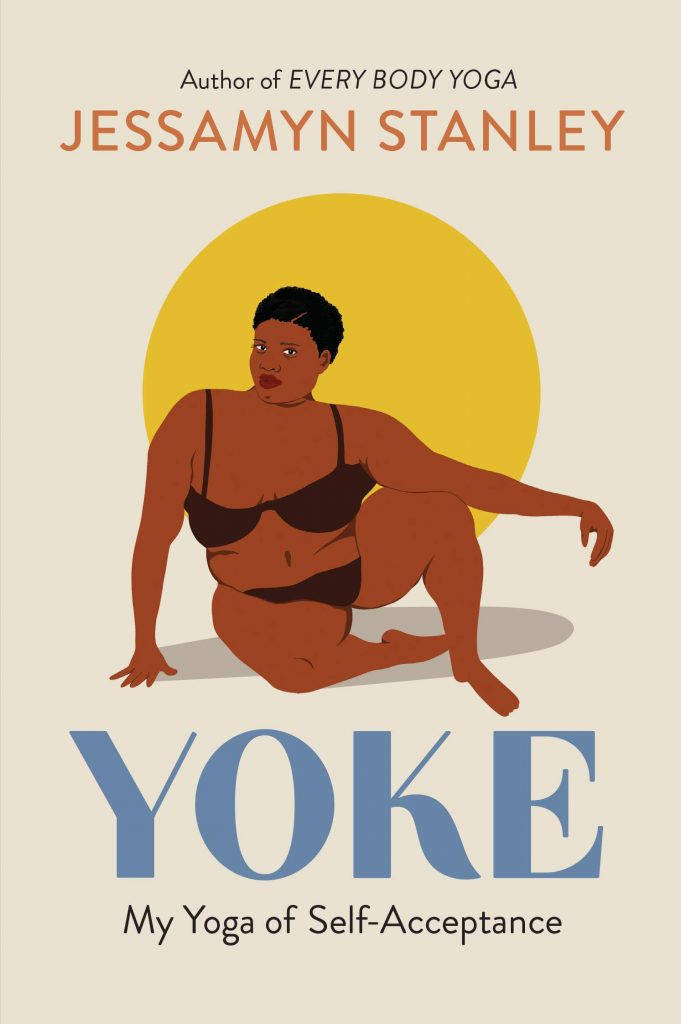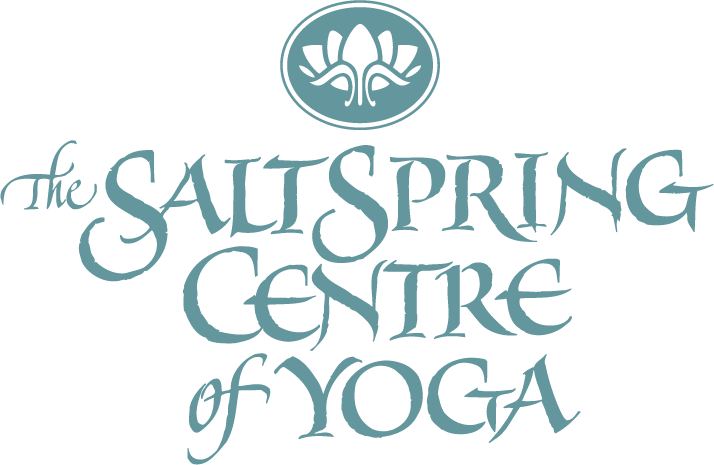
BOOK REVIEW: Yoke – My Yoga of Self-Acceptance by Jessamin Stanley
Reviewed by Kenzie Pattillo

In Yoke, Jessamyn Stanley offers us a lens through which to view Yoga in a way rarely made available by mainstream means. This book has served to remind me that I teach Yoga with plenty of unconscious bias that rarely gets challenged, because for the most part my yoga students look and act like me, and come from similar socio-economic, educational and cultural backgrounds. I have been reminded that my own lived experience is not universal, and yet the universal is where we find common ground.
We’re not all having the same experience and that’s okay. We’ve gotta stop expecting other people to understand where we are coming from because they just never will…We’re strangers even to our closest friends. What makes us all the same is we’re all having our own unique experience of self-exploration and acceptance. That’s the thread that will always stitch us together. (Stanley, page 141)
As a yoga teacher I am aware that I teach from the experience of my body size and ability, and though I have worked hard to make my classes trauma-informed and personal choice-driven, I need to constantly remind myself that I have unintentional blind spots born of my privilege. With Yoke, Stanley provides a much overdue opportunity to broaden my view. We don’t know what we don’t know. Listening to and learning from folks of differing lived experiences cultivates Ahimsa (non-harming) and Svadhyaya (self-study, inner exploration). This IS the work of yoga.
Each chapter starts with a few choice yoga sutras that weave their way into the essay that follows. About her choice to include the sutras she writes,
The Yoga Sutras of Patanjali offer a road map for discovering a manifesto that’s already written inside you.The only reason the sutras make any sense is because they speak the language of the soul. The book itself isn’t nearly as important as the Truth it expresses, which is both timeless and crucial…retreat within it for the solace and companionship offered by the sentiments, but don’t overly identify with the pages themselves. (Stanley, page 41)
She goes on to write..
What sacred texts can do is provide context for the Truth that is always living inside you. Maybe you’ve got access to your truth but the words are slightly out of focus and the characters are unfamiliar. The words of others can help translate a Truth that might otherwise be impossible to comprehend. (Stanley, page 41)
This is just a small example from an early essay that illustrates the unique honesty of her words and the depth of expression born of her unfolding understanding.
Jessamyn Stanley lives her yoga out loud and unapologetically. As an ‘Instagram yoga influencer,’ (I’ve never been on Instagram so I still don’t totally understand how that is a thing) and self-described fat, black, queer femme, she speaks with hard-earned wisdom about cultural appropriation, the white supremacy inherent in the capitalist underpinnings of the yoga industrial complex, and the fetishization of her size and colour in American celebrity yoga culture. And she does so with wisdom, compassion and humor.
Yoga is the reminder that everything you seek is always happening inside of you all the time. But what about yoga in the era when everyone, even your great-grandma, is looking for validation on the internet? When followers become proof of life, proof of identity, proof of purpose…Spiritual dissatisfaction is at the core of our collective unhappiness. Capitalism thrives when you hate yourself…Nothing you buy will ever be enough, and it’s set up that way by design. But while capitalism is all about looking outside your Self, yoga says the exact opposite… (Stanley, page 72)
She dives into her own unexpected journey towards yoga and admits to so much we often cover up to protect our external narrative. She admits to imposter syndrome even as she is publishing her second book and appearing on the cover of Yoga Journal. She admits she slept through sutra study in her YTT and avoided pranayama and meditation for as long as possible. Her honesty is refreshing and her accounting of the gaps and hypocrisies of modern postural Yoga is sadly, quite universal.
About meditation she writes,
I didn’t take the practice of meditation seriously. And it really is a practice, not a perfect. At its core meditation is a practice of contemplation. You can practice it all the time. Every moment of life is a meditation…A mind that moves quickly is meditation’s only prerequisite, and authentic stillness only comes when you stop trying to pretend it. In my experience half the difficulty of meditating is created by pretending to meditate. I didn’t know I needed to stop being so desperate for the fantasy of calm and just allow the chaotic thoughts to crash in. (Stanley, page 146-147)
About pranayama she writes
Moving organically with your breath and over time, you’ll find that you’re moving through your breath and that your life force is a manifestation of your breath. The breath will become your primary motivator and teacher . It will not only deepen your postural practice and navigate your journey towards meditation, but it will also unearth a deeper connection to your internal and external worlds. (Stanley, page 122)
Stanley uses the light of wisdom cultivated by her yoga practice to help illuminate so many aspects of modern yoga that we have both willfully and unconsciously turned away from for too long. She reminds us that yoga can offer us tools to help us turn towards what is with open curiosity.
As readers of this newsletter, you may have come to yoga through this community and had your early explorations supported by the container shared by this Satsang. I’ve had to check my judgement at the door as I stretch my mind to see social media as a viable path towards a shared yoga community.
Vapid as it is, dancing for Instagram likes still got me to self-acceptance. Social media provides an accurate, shocking, and embarrassing mirror in which to view my truth, and by standing on my internet soapbox, people I will never meet are invited to view their truth as well. It may seem like the digital age trivializes yoga, but is the spread of compassion ever really trivial? (Stanley, page 78)
Less comfortably, as part of a community that draws its lineage and practices through the teachings of Baba Hari Dass, it is our shared responsibility to unpack and understand the fine line between cultural appreciation and cultural appropriation.
Cultural appreciation means learning and respecting heritage, but cultural appropriation always comes down to theft prioritized over reverence. The line between appropriation and appreciation is wafer thin…Avoiding cultural appropriation means exploring the reasons we appropriate. Inevitably it means gazing up and accepting the colonizer inside of you. This self-exploration is yoga in action..(Stanley, page 101)
Jessamyn Stanley, chapter after chapter, shakes the dust off the ancient practices that modern postural yoga often glosses over, and shines new light with her refreshingly contemporary perspective. She starts conversations we need to continue having with each other in order to keep growing into our shared humanity. She does not purport to be the final word on any of these aspects of yoga, but she gives us words and ideas to provide a starting point so many of us need to find right now. And though it would be easy to just focus on the things that divide us, again and again she brings us back to the universal experience of being moved by spirit and truth.
